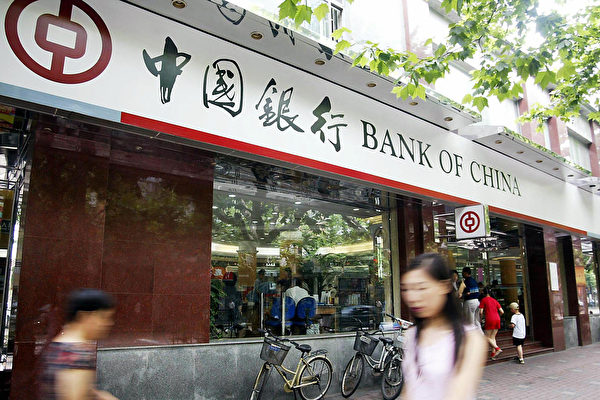China’s state-owned banks recently released their first quarter financial reports, showing decreases in both operating income and net profit for the four major banks. Experts have analyzed the five main reasons behind the decline in revenue and profit of these banks, especially the collapse of the real estate market, which has led to a significant increase in bad debts for the banks.
In the first quarter of 2024, Industrial and Commercial Bank of China, Agricultural Bank of China, China Construction Bank, and Bank of China all reported a decline in operating income and net profit, as reported by the Southern Metropolis Daily. Industrial and Commercial Bank of China’s operating income decreased by 3.41% year-on-year to 219.843 billion yuan, the largest decline among the state-owned major banks. China Construction Bank saw a 2.97% year-on-year decrease in operating income, and Bank of China reported a 3.01% year-on-year decrease in operating income.
Looking at the structure of operating income, all four major state-owned banks experienced declines in net interest income and fee income in the first quarter.
Industrial and Commercial Bank of China achieved a net interest income of 161.401 billion yuan, a 4.16% year-on-year decrease, with non-interest income at 58.442 billion yuan, a 1.25% year-on-year decrease. Bank of China reported a net interest income of 112.712 billion yuan, a 3.94% year-on-year decrease, with non-interest income at 48.106 billion yuan, a 0.77% year-on-year decrease.
China Construction Bank saw a net interest income of 149.731 billion yuan, a 2.19% year-on-year decrease, and fee and commission income at 39.278 billion yuan, an 8.69% year-on-year decrease. Agricultural Bank of China reported a net interest income of 144.535 billion yuan, a 0.74% year-on-year decrease, and fee and commission income at 29.037 billion yuan, a 10.79% year-on-year decrease.
American economist David Huang analyzed the situation, stating that China’s banking system is not driven by market forces but by centralized management that sets loan and deposit rates, relying on the interest rate differential to generate profits. He emphasized that the current challenges faced by Chinese banks are a result of various factors affecting their profit margins and revenue streams.
Huang highlighted several factors contributing to the revenue and profit decline of the four major Chinese banks. Firstly, he mentioned that banks primarily rely on lending to small and medium-sized enterprises for profits, but with tightening regulations and lower loan profitability, their income has been impacted.
Additionally, Huang pointed out the lack of economic activities among individuals and businesses, leading to a decrease in banking transaction fees and overall market activity. He also highlighted the diminishing profits from financial products like wealth management and insurance due to frequent product failures in recent years.
Furthermore, Huang discussed the significant impact of the stagnant real estate market on the banks’ profitability, as real estate-related lending has historically been a considerable source of revenue. With the current downturn in the real estate sector, banks are facing higher non-performing loan ratios and reduced income from mortgage lending.
Moreover, he noted that the rising bad debt rates, particularly attributed to corporate bankruptcies and defaults, have further strained the banks’ profitability. These cumulative factors have contributed to the rapid decline and negative growth in the profitability of Chinese banks.
American economist Henry Li provided insights on the different revenue streams for banks, emphasizing the importance of interest rate differentials, banking services, and diversification in revenue sources. He stressed that in prosperous economic periods, banks thrive on lending activities and diversified financial services.
Li further delved into the relationship between the real estate market collapse and the increasing bad debts for banks. He highlighted the significant role that the real estate sector played in driving economic growth in China, with most banks heavily invested in the real estate industry during its boom period.
However, Li cautioned that the current scenario has drastically changed, with the collapse of the real estate market leading to a surge in bad debts for banks and diminishing asset values. As property prices decline and debt exceeds property value, many borrowers are unable to repay loans, leading to a surge in non-performing assets and potential systemic risks for commercial banks.
He warned that without strong government intervention, such as financial support or debt restructuring, many Chinese banks could face insolvency due to the mounting bad debts and economic challenges.
Li expressed deep concern about the severity of the situation and emphasized the urgent need for comprehensive measures to address the growing debt crisis and financial risks facing the Chinese banking sector. He criticized the lack of proactive measures and reliance on temporary fixes, calling for decisive actions to prevent a widespread banking crisis.
In conclusion, the challenges faced by Chinese banks, including declining profitability, rising bad debts, and economic uncertainties, highlight the urgent need for structural reforms and prudent financial management to mitigate risks and ensure the stability and resilience of the banking system in China.

